“I love being an alien and I take secret delight in having ‘Resident Alien’ written on my green card, it makes me feel intergalactic”
Hauntingly understated and deadly in their minimalism, the photographs of Simon Kossoff tell a fascinating story that is at times breathtaking in scope and other times shatteringly personal, and sometimes both at once. A British expat who has also lived in Norway and Spain, he now resides in the American Midwest, where he has used his photography to explicate the American visual vernacular and its idioms, as well as to document his own journey through life, and how it has brought him to this place.
In an email interview, I was able to ask Simon about how his life has lead him to the United States, the underlying motives behind his photographs of America, and what has surprised him most about living here.
The first thing I usually ask in these interviews, and which is of particuler relevance to your work, is where you are originally from, and how it may or may not inform your work today. In your case, you’re from Brighton, England, which has given you a unique perspective on American culture. Would you discuss how you came to be a British expat who photographs American vernacular?
I come from an artistic family on my father’s side. My Grandfather was a theatre and screen actor, my father was a guitarist in a well known rock band, my uncle is a lighting camera man and my aunt makes documentaries. My mother’s side comes from a working class family in the industrial north of England and it was my mother that raised me and my brothers, more or less as a single parent.
Were you engaged in photography before coming to the US?
I am not sure if it was nature of nurture, but growing up I was interested in most art forms and tried my hand at many of them and often went from one to the other looking for the best way to express myself with great frustration to my family. I found photography while I was at school, but it wasn’t until I later enrolled on a course led by a Fellow in the Royal Photographic Society that I really became interested. It was a great old school black and white printing course and my teacher Ron Frampton was a master craftsman. I learnt a lot from him about darkroom practice and he gave me a lot of encouragement too and I was introduced to many of the greats along the way. He used to tell us to ‘Be true to your own vision.’ Like the wise old man he was. It was really a formal training which now looking back has meant a great deal to me.
From there, in 96, wanting to continue my education and be part of a more lively and contemporary photographic environment, I applied to the University of Brighton’s BA Honors Degree in Editorial Photography and a whole new world opened up for me. It was a fantastic course and at the time one of the best in England, I think. My lecturers included Mark Power, Paul Reas, Gerry Badger and Jim Cook and every Friday a visiting working photographer would come and give us a slideshow, talk about their work and sometimes review and discuss our own projects afterwards. It was at Brighton that I was introduced to colour, pretty much for the first time, but I didn’t make much serious colour work there, preferring instead my black and white darkroom practice and obsessed with creating my own photographic Tarot deck, which became my main final year project and subject of my dissertation. It was a wonderful place to grow, explore, experiment and learn how to see and in many ways I am still learning from it. In fact the teaching of how to work with ideas and developing them into bodies of work stays firmly with me to this day.
When I graduated I moved to Oslo with my Norwegian girlfriend who was an amazing conceptual photographic artist called Tonje Andersen. I lived and worked there for three years – Norway was beautiful and in time my girlfriend become my fiancée. When I returned to England in search of commercial photographic work I got a phone call one evening telling me Tonje had died suddenly and my world fell apart.
I spent the next three years in a dark place. I was grieving, depressed and dangerously self destructive. I didn’t take a single photograph during this time, but preferred writing instead and published a book of poetry called Meat Wheel – a title coined from a line in Jack Kerouac’s beautiful book Mexico City Blues. Apart from this I was not creative at all and hit one rock bottom after another.
After a stay in a monastery in Thailand as an attempt to get my life back on track I moved to Madrid, Spain to become an English teacher and it was here that I re-discovered photography, met a girl, (a Colombian American called Jenny) and learnt to fall in love with my life again. At Jenny’s persuasion, I bought my first digital camera and I started making pictures again and for the first time I began to really start seeing in colour.
These first photographs sent me on a search for, what photographer Harvey Benge calls in his wonderful book Vital Signs, the ‘I’-ness in ‘Other’-ness. I’d had up until this point, a lot of therapy and I still had a lot of stuff to work out and photography became, in many ways, an extension of this and actually it is still very much the way I work today.
The two years I spend in Madrid were full of revelations and discoveries and when at the end of 07 Jenny left Spain to return to Kansas, I followed. I’ve been here now for 2 ½ years.
In your Flickr profile you say “Half truth and half fiction, these photographs are a ‘mental geography’ filled with personal symbolism and tangled with influences I often did not know were there until I started photographing them.” Can you elaborate on these ideas?
Coming to America was like meeting someone who you have heard a lot about but not yet met. You build up a picture of the person in your mind based on what you have already been told by others. Sometimes the space between different pieces of sometimes contradictory information starts to get filled with assumptions, fantasies or prejudice and the mystery becomes charged with all sorts of hopes and fears, which are more to do with you than the person you have not yet met. In England, much like anywhere, I have grown up with American culture in its countless forms and I guess it has become as much a part of me as anything else has, yet I had never experienced it in the ‘real world’.
I found on my arrival here that I had brought this lifetime of influences with me and it has been these influences, (which could also be described as my dreams of America) that I originally went out looking to photograph. This search has since taken me across the country on several road trips and I’ve had a fantastic experience looking for it and as a result I not only feel I have orientated myself here to some extent, meaning I have got a sense of the sheer size and scale of America, but I have also, in the process of traveling and photographing, re-defined my own personal vision of America, which now lies somewhere between my head and the landscape in front of me, which is as close to the ‘real’ place I can hope to get. Every mile has been both exciting and an inspiration. It’s an exploration that I hope never ends. Part of this journey can be seen in my ‘Running on Empty’ series, but it is really an on-going thing and the backbone to all the work I make.
Part of the brilliance of your photographs is keying in on things pieces of the cultural landscape of America that people who grew up here may take for granted or be totally oblivious to. Could you discuss how you came to be cued in to finding these subjects, whether it’s a part of the culture shock of moving to the Mid-West or if it’s something else?
Culture shock certainly does have something to do with this, yes. I love to be in culture shock for a long as possible, because it keeps you in the moment with your eyes open and alert and in a perpetual state of wonder and sometimes confusion too. I’ve found that culture shock can help you to compare the world you’re presently in with the world you’ve come from – which as a result, gives you a better understanding of both and also of yourself. I don’t think there is such a thing as true objectivity, but being in culture shock has brought me as close (once or twice) as I’ve come to it. That’s another reason why I love to travel so much I think, which has not been easy to do as I’ve suffered in the past with spells of acute agoraphobia.
Culture shock is like the ever dissolving layers of an onion, every day a layer of this sensitive awareness is peeled away until one day, without knowing, you are right there in the middle of it unable to see anything at all.. I am being extreme here, but it is a constant fear of mine and I do everything I can to prevent this happening completely. I love being an alien and I take secret delight in having ‘Resident Alien’ written on my green card, it makes me feel intergalactic. When I first started showing my work here, it was important for me that Americans recognized something of the America I was photographing and am very interested in what it is they do recognize (or not) and why. This has helped me to understand what I am doing in a wider sense, and this has to a certain extent, shaped the way I have worked. I remember getting some wonderful reactions to a photograph I made in Winsted’s Diner of a table of empty plates, crumpled napkins and half eaten cheeseburgers [see image at the end of this article]. For me the image really was about the light on this daily scene, but it has inspired some wonderful personal stories in others. Photographing the cultural landscape has in turn given me an understanding of the people who inhabit it. Another image I made in Hobby Lobby [seen below] of a display of Christ and St Christopher ornaments also got some interesting reactions too and made a few people uncomfortable. Showing my America to Americans has been really fascinating.
Speaking of culture shock, what’s the most bizarre thing you’ve found in your investigation of America?
There are so many things I have found bizarre about America, but there are two which stand out and still leave me baffled. The first is your healthcare and insurance system. I’ve been here 2 ½ years and I still feel completely naïve about it. I have discovered though that it’s something that runs through and deeply affects everyone’s life here and it often determines the direction many people’s lives take, which is really scary. Coming from England where we have enjoyed both private and public health insurance it was frightening for me to realize that here in America I was suddenly vulnerable and if I were to became sick or worse there would be nothing I could do about it as I had no insurance coverage whatsoever. It is really is bizarre and frightening to think that any sick person living in America – citizen or not who doesn’t have insurance or means to pay would be left to suffer without drugs or treatment. There is something barbaric about this to me and I almost don’t believe it as I type these words – like I must have missed something somewhere. National health insurance was something I had taken for granted in England and I never realized just how expensive medical treatment is. The prices are, to me, simply astronomical and seem to be totally out of step with most people’s earnings. I do not yet know or understand how they justify it. It is as if drug companies took the expression “You can’t put a price on your health” and proceeded to screw everybody with it royally.
The second bizarre thing was something I experienced when I first arrived in Kansas City. I was struck by the fact that I hardly ever saw anyone out on the street – it was un-nerving seeing these roads and streets full of cars, without a soul walking around. At first I thought It was just Kansas City, but I have since discovered it is the same case in dozens of cities I’ve visited in the U.S. The geography of many cities is so dispersed that you need a car to do everything and go anywhere. This took a long time for me to get used to and I found it extremely alienating. In fact it affected me so much that for a while I got quite depressed. I even started to become resentful about driving everywhere and for a while, I took a personal stand against it and did start walking to places, but it just felt strange walking out there on the street alone with all these drivers rubbernecking in my direction as they passed - peering at me like I was a criminal or just plain mad. Once when I was walking to a store a Police car actually slowed right down to my walking pace to take a closer look at me because, I guess, what I was doing was unusual and perhaps even suspicious.
Remember I am writing this as an outsider whose ‘normal’ urban experience comes from busy and sometimes congested European cities which have large pedestrian populations and well connected public transport. New York City and Chicago feel European in many ways to me and this is why I have felt more immediately comfortable here than in cities like San Diego, Indianapolis, Kansas City and LA etc.
You’ve traveled around the US fairly extensively in the time you’ve been here. Do you find substantial regional differences among places you’ve visited?
There are regional differences between places, yes, but on the whole they are more to do with the landscape than anything else. I might be speaking romantically, but I think, these differences are because of how people have learned to adapt to the extremely varied geography of the U.S. – forest, planes, mountains, deserts etc. America seems to have the geography of the whole world on one continent, but inhabited by the same people. Culturally though do not think there is too much difference regionally, especially when you consider the huge distances involved. The distance between New York City and Los Angeles is approximately the same as the distance between London and Bagdad.
One project you’ve been working on has to do with images of US presidents. Can you discuss this project and what, if anything, you’ve learned about the American Presidency in the course of it?
Well, I terms of passing an exam, I’m afraid I have not learned that much. In fact a lot of what I have learnt about the Presidency has come through listening to the people I’ve met here – an oral history. This project, which is still in its early stages, is really an extension of an earlier series I made about Elvis Presley and comes from a similar place. It’s difficult for me to explain, but this project has felt a bit like I am photographing a kind of sediment – a history that has filtered down through time and settled here in the present - all these powerful leaders who at one time stood for so much have now washed up on the shores of the here and now, so to speak - their images have anyway, and then these images become culturally recycled in one form or another, whether it is in advertising, a T-shirt design, a record sleeve, a public monument, or just surface in the clutter of a thrift store. The presidents have become symbols - powerful historical markers and it has been interesting to see how and where they reappear. Right now I am keeping my eyes open and simply recording these appearances and trying to be aware of the context I discover them in, in a hope it will inform me somehow of who they were and what they stood for. It’s really a psychic history lesson I’m giving myself. This is why I like thrift stores so much. It is where all these great once new ideas, fads and fashions, heroes, villains and icons eventually all seem to end up. Walking around American thrift stores is like viewing a kaleidoscope of American culture past all under one roof - It gives me a strange kind of perspective which I understand, but find difficult to put into words.
Can you discuss any other ways in which your photographic investigations have intersected with American politics?
I guess a few of my projects could be described as political. It’s strange too because I never really considered myself politically minded before I came to the U.S. This may have something to do with arriving during the election and in the middle of a recession. Everyone seemed to have an opinion about it and because I was an outsider, I think people enjoyed using me as a sounding board for their opinions and ideas. It was on one of my first road trips that I began my ‘White House’ series. I was driving back to Kansas from New York City. I listened to a lot of radio in the car and got quite involved, listening to the discussions around the election and I felt like I was witnessing history in the making, it was very exciting. At the same time, when I stopped to take pictures in these small towns and walk around, I would often talk to people and I began to hear all these sad stories about job layoffs and business’s folding. I could see it too as I drove, but I wasn’t sure what to make of it because I didn’t know what it was like here before the recession. I was somewhere in Kentucky when I saw this abandoned white house at the side of the road and I immediately thought it was a great metaphor for the current state of affairs and I photographed it. This idea then, over the following months, slowly built into a series. Every State I visited had their own symbolic white house and photographing them helped me to kind of connect locally, on some level, to the effects of the recession which was nationwide.
Another series, ‘States of Grace’, though not directly political, does contain some political images. The series was made during my immigration process – from Tourist to Illegal alien to Permanent resident. The series is really actually more of a psychological document than anything else. It was a difficult time for Jenny and I and because my case was ‘complex’ it felt for a while like we were living on borrowed time and the threat of being deported was something that seemed to be always with us. Because of this we couldn’t put down any roots or make any firm future plans, which was very stressful. This is one reason why I traveled so much during this time - I wanted to see as much as possible, just in case. Also because it was an election year and the recession was beginning to bite for many people, it often seemed like my own anxiety and hope during this period was also a kind of echo of the anxiety and hope of the nation I had arrived in. This is something I was very aware of throughout the making of the work and was an important element when I came to editing it. This project also deals with my feelings about being an alien too and immigration is a hot topic here. That is why I included a few images from my Roswell visit. There is also included an image I actually made at my immigration Lawyers office of some spectral looking manikins, I don’t know what they were doing there, but they looked as though they had just beamed down from another planet, which is how some people view immigrants here. This series is full of references to life in America for me, some personal, like alienation and my own American dream and others explore common themes, like family, money, the myth of the old west, road culture, healthcare, religion and so on. It is a mosaic of images, a poem based on my experiences during this time.
The other Political work I’ve made is the ‘Victims’ series. This series, made over a few weeks, consists of 10 close up photographs of my Television screen, made during various news programs. The series came about last winter after I hurt my back at work and as I was not able to get outside to make pictures and was pretty much house bound, I ended up watching a lot of TV at home. During this time I began to notice that when a news program ran a story about a victim of some kind, whether it be a crime victim, a victim of a con, or swindler, a victim of a job layoff or a house repossession, the faces of these people were always obscured or pixilated and their identity was hidden. I found this a curious and strange sight, but for me, they seemed to be the faces of everyone. I had met so many people who were victims of the recession in one form or another and it was so present in my mind that when these pixilated victims appeared on TV before me I couldn’t help but connect them back to all the real victims of these difficult times. It’s interesting too that since making this series the images have taken on further significance for people. It is as if somehow their anonymity has made them universal, allowing people to directly relate to them on a personal level and they are now seen, by many, as every victim and all of us.
When I exhibited them, last year over the Christmas period, as ten 20x30 prints, they evoked in some people a strong negative reaction and the show was sadly cut short and deemed by the gallery owners as inappropriate viewing for their clients, who rented out the gallery space out for private parties. It was as if they didn’t want to be reminded of something the images actually did not depict.
What is something about America that has completely defied your expectations, and what is something that is exactly how you expected it to be?
Well, for me, what defied my expectations is linked closely with what I expected it to be. If you do not live in America I think it can be very easy to judge it. Before I arrived here I always thought America was a place of extremes, but now that I am here I see that these extremes are the absolute black and white of what makes up a really huge spectrum and I have, over time, come to understand something about these different facets within the culture which could or could not lead to some of those extremes. I am not saying I agree with them at all, but I can see how all these smaller elements could have an influence on a person, group or the country as a whole. I know I am not being specific right now, but I really don’t think I need or want to be. It’s like suddenly seeing the mechanics of a machine. You may not like all of what the machine produces, but because you’ve seen all its moving parts, you have an idea of how the product is made and it is this which has defied my expectations.
Can you give a summation of what effect all this cultural investigation has had on you? How has it changed how you view America and has it changed you?
My life has taken so many unexpected twists and turns in recent years and at times been so turbulent that I find this is an extremely difficult question to clearly answer. Over the last five years or so I feel like I have been in a constant state of becoming conscious and present in my life and I would say that meeting my wife and moving here have been natural steps I have taken in this direction. I can be sure though, in terms of photography, that America is for me, the ultimate subject matter, which I find continuously inspiring. I know I have only been here 2 ½ years, but I do absolutely feel I am in the right place to express myself and I am excited to see how this side of me will grow, change and develop in the future.
All photos copyright Simon Kossoff
Amerikana's excellent blog can be found here: http://amerikana.tumblr.com/

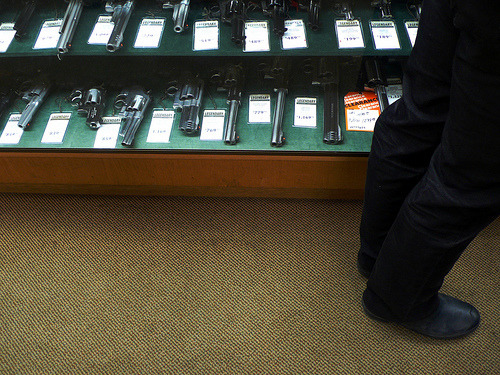
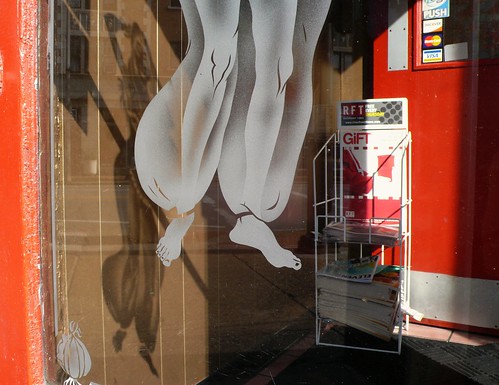
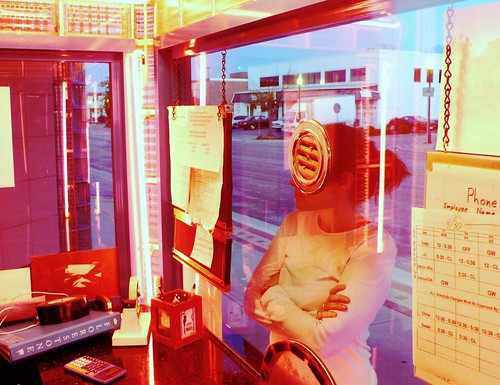

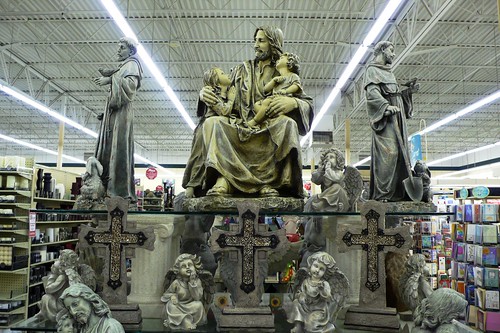


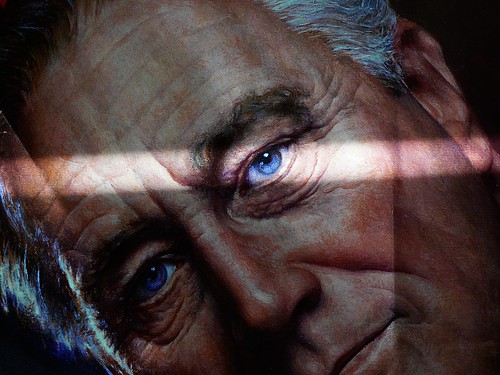
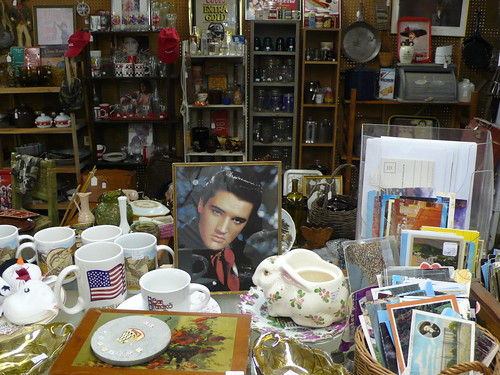


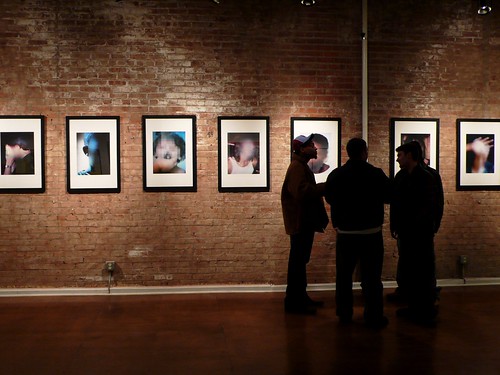
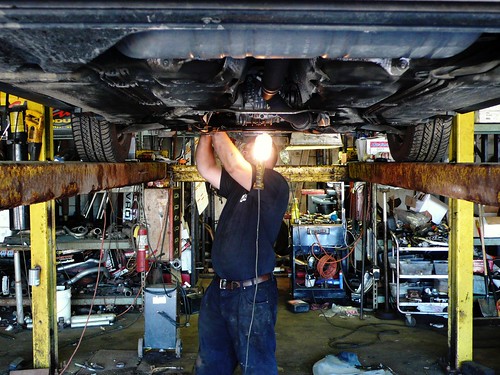
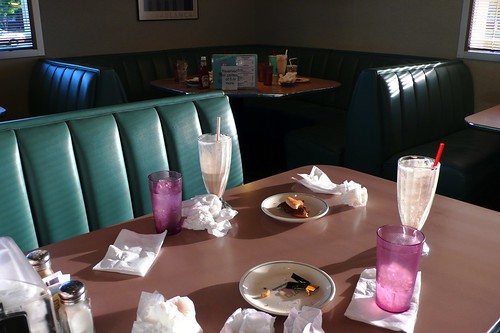
Great interview, Simon!
ReplyDeleteThank you Anna
ReplyDeleteYou are so good. It does my head in a bit because.... I find it rare to find something that moves me to this degree.... in the the modern media landscape.
ReplyDelete*chilling
Wonderful. Full of wonder. Remain an alien but don't relax and swing. These images are extraordinary in their ordinary way. Crisp, surprising, beautiful, funny, paradoxical, insightful. A bit like the guy that took them. Well done and keep going...
ReplyDeleteHi Adam, Nice of you to drop by and spend some time reading this interview. Thanks for the kind words and I hope this finds you well. Happy New Year.
ReplyDelete